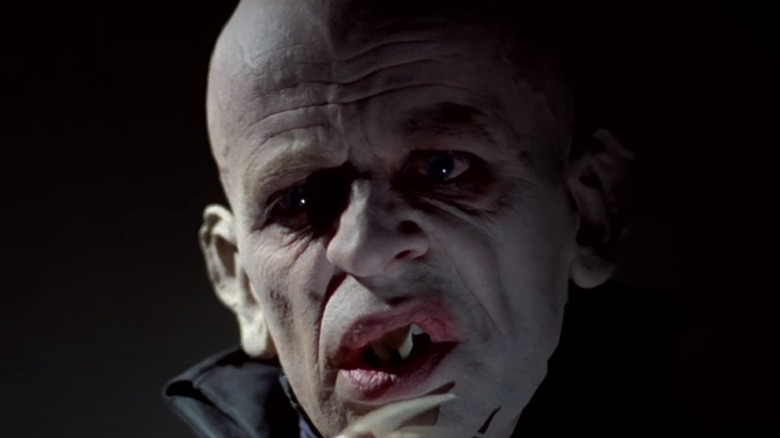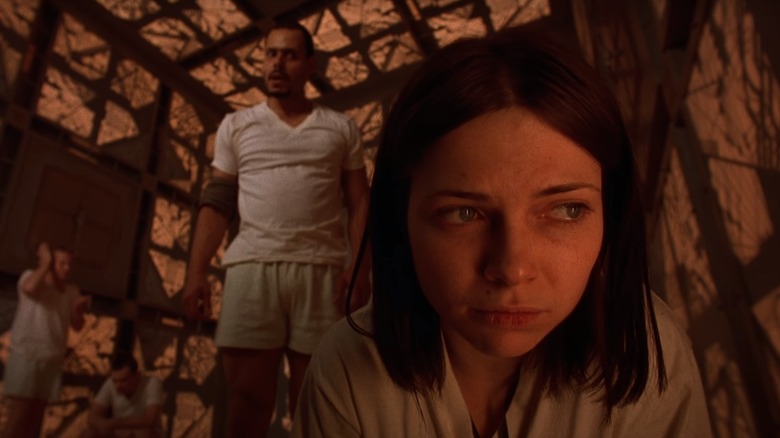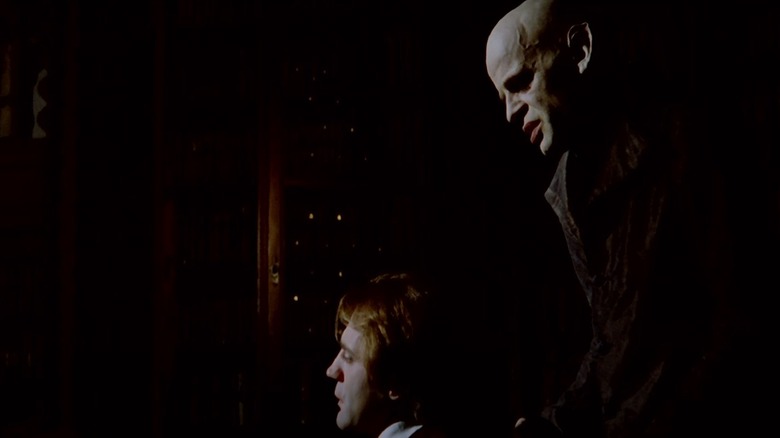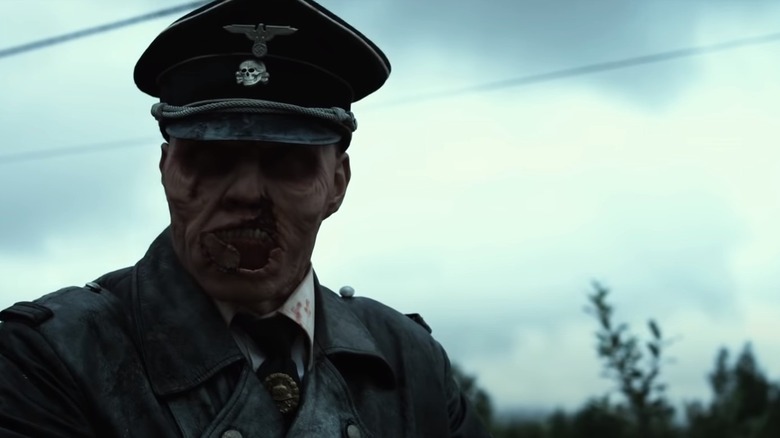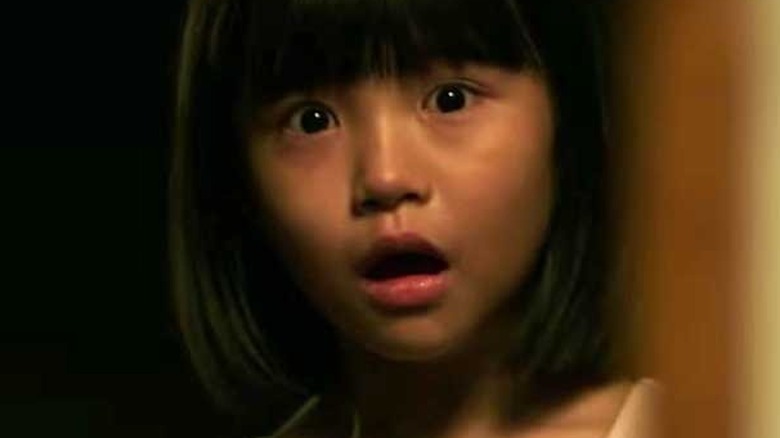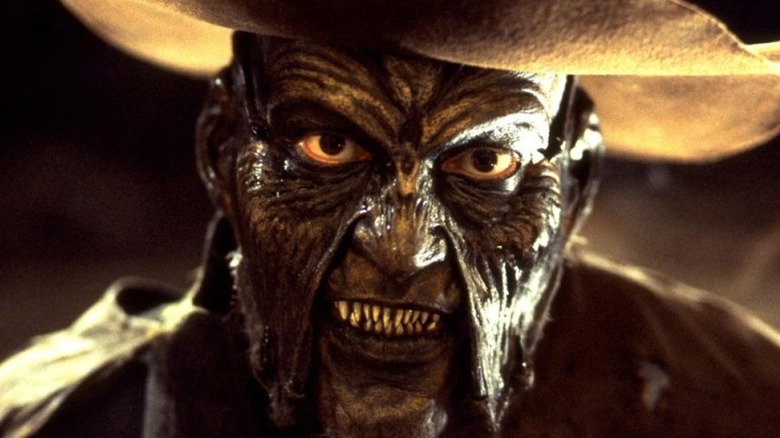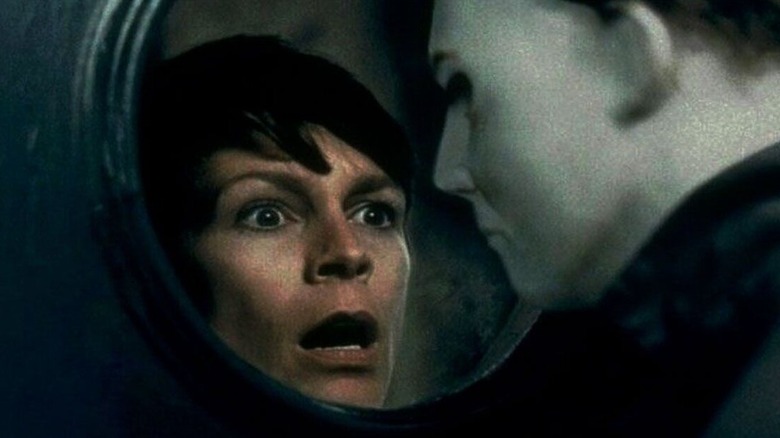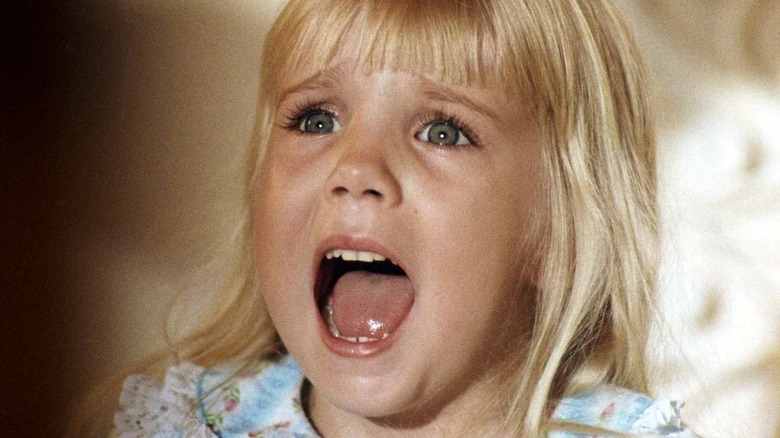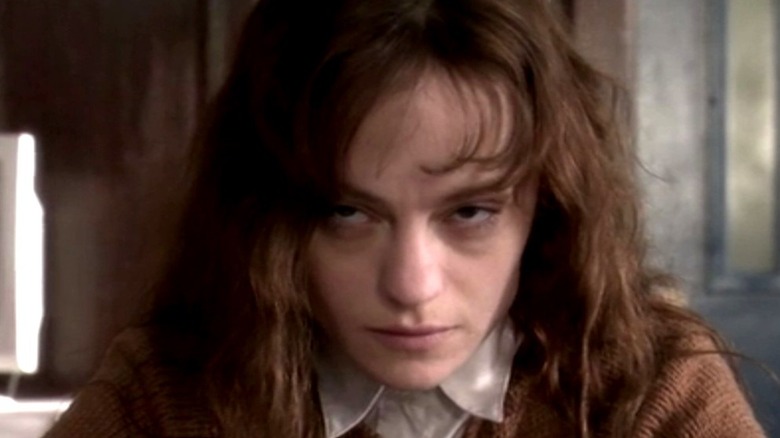The Best Free Horror Movies You Can Watch On YouTube Right Now
In his treatise on the nature of human fear, American multi-instrumentalist Andrew Gold posited that, "Spooky, scary skeletons / Send shivers down your spine / Shrieking skulls will shock your soul / Seal your doom tonight." He was right, of course — spooky scary skeletons can, as a rule, be counted on to sneak from their sarcophagi and just not let you be. But what if you're not close to a sarcophagus? What, indeed, if bags of bones are, to your eyes, a terror that's best categorized as merely semi-serious?
If that's the case, then consider this: YouTube offers a genuine smorgasbord of horror flicks, each designed to scare you and the ones you love, and each for the unbeatable price of zero dollars. The list is extensive, and runs the gamut from blood-soaked action to psychological thrillers that'll have you questioning the very nature of your existence — you know, just for fun. Here, we'll take a look at some of the best and most gruesome films that YouTube has on the menu.
Cube
On paper, "Cube" really should have turned out boring and bad. It was shot on a budget of less than half a million dollars on a Toronto sound stage and, in an especially foreboding development, involved hiring a math consultant. It had precisely no right to be good.
But here we are, nearly 25 years later, and "Cube" is still a classic of the low-budget, high-concept horror oeuvre. Written and directed by Vincenzo Natali of "Splice" fame, it tells the story of a group of strangers caught in what could best be described as a page from the Jigsaw Killer's dream journal — a maze of identical square rooms, intermittently booby trapped with all manner of unpleasantries, ranging from your boilerplate face-melting acid to a device that turns people into easily stackable segments of themselves. Typical as to what tends to happen in these situations, the argument is presented that human cube steak machines aren't the real monster — the real monster was the friends we made along the way.
Nosferatu the Vampyre
A full 40 years before he tried to kidnap Grogu, acclaimed filmmaker and amateur Henry Kissinger impersonator Werner Herzog took a swing at the legend of Dracula, reimagining 1922's "Nosferatu," the single most beloved piece of stone-cold plagiarism in the history of cinema.
The result: "Nosferatu the Vampyre." Released in Germany as "Nosferatu: Phantom der Nacht," the movie starts out about as unsettling as is generally considered possible, smacking viewers right in the gob with shots of very real, entirely not fake bodies of mummified children. With the tone having been set, the story continues in roughly the same direction as Bram Stoker's original novel, while taking design cues from the original "Nosferatu" and ramping up the horror thanks to Herzog's unique eye for creeping you the hell out.
"Nosferatu the Vampyre" has received near universal critical acclaim since its 1979 debut. Klaus Kinski's performance as the film's ratlike blood sucker, creepy from the get-go, becomes all the more unnerving when you realize that he's currently in your closet and there's nothing you can do about it.
Dead Snow 2: Red vs Dead
Uniformed, goose-stepping Nazis have luckily become more of a rarity to come by in the years following World War II. However in 2009's "Dead Snow," the plot merged them with cinema's other favorite baddy to blow up, stab, and slap chop into pulpy bits: the humble zombie.
All of which raises a new problem: how do you up the ante on a story about undead fascists? In 2014, "Dead Snow" writer and director Tommy Wirkola gave audiences the answer: surgically attach a sentient zombie arm to the hero from the last movie. Maybe toss in an army of shambling Communist corpses, too. Also, see if Martin Starr is available, since he's literally only ever made things better.
"Dead Snow 2: Red vs. Dead" is a certifiable banger of a flick, somewhere between "Army of Darkness" and "Shawn of the Dead" in tone, with shades of "Idle Hands" and the undeniably striking image of a zombie in an SS uniform driving a tank thrown in for good measure.
The Mimic
The Jangsan Tiger is a well known (and very scary) urban legend in South Korea (per Asian Movie Pulse). The white-furred and fanged creature supposedly stalks the Jangsan Mountain outside of the city of Busan, and in order to capture humans and eat them, it emits a wail that sounds like that of a woman in peril. The Mimic, a 2017 horror movie produced in South Korea and nominated for multiple South Korean film industry awards, brings the frightening tale to life in a setting grounded (ever so uncomfortably and menacingly) in reality.
Min-ho, Hee-yeon, and their daughter Joon-hee move in with the family matriarch to care for the woman and to help Min-ho cope with the loss of her son five years hence. Mirroring a number of missing persons cases in the area, Grandmother keeps hearing the voice of her deceased sister coming from the forest. Meanwhile, little Hee-yeon finds a girl in the woods who looks and acts exactly like her daughter ... almost. Things get even more confusing and off-putting when the bodies start to pile up and it's necessary to cover all the mirrors in the house to prevent the evil from breaking through to this realm.
Jeepers Creepers 2
The phrase "Jeepers Creepers" is a cute, casual old-timey expression that means the equivalent of "my goodness," to indicate minor, pleasant shock. That sentiment is completely subverted and stretched to its absolute and ironic limits with the "Jeepers Creepers" film series, particularly the second entry in the franchise, "Jeepers Creepers 2" from 2003. Further playing with the idea of disarming the audience to induce sheer and utter terror, "Jeepers Creepers 2" is merely unsettling at first, finding and exploring the creepiness in common things.
Set just after the first movie, a monster known as the Creeper kidnaps young Billy Taggart (Shaun Fleming), because it needs to feed. His father Jack (Ray Wise) and brother Jack Jr. (Luke Edwards) think the attack has something to do with a supernaturally monstrous scarecrow. It most certainly does, and things only get worse in terms of murder and mayhem when a school bus full of teenagers breaks down outside of town after a projectile made of bones blows up a tire. But it's nothing personal — the Creeper is only doing what comes naturally, killing to eat, thus horrifying a small farm community and some unlucky visitors.
Halloween H20: 20 Years Later
An early example of a franchise reboot that's also a legacy sequel, "Halloween H20: 20 Years Later" is the seventh entry in the horror series about the brutal (and seemingly immortal) masked murderer Michael Myers, bringing him back to his most iconic target, Laurie Strode. Released in 1998, "Halloween H20" cashed in on the late '90s teen horror boom ("Scream," "I Know What You Did Last Summer") by celebrating the 20th anniversary of the John Carpenter film from 1978 that inspired those movies while bringing in a whole new cast of young actors to continue to tell the story of Myers vs. Strode, ignoring some of the more poorly received latter sequels.
Picking up two decades after she was nearly murdered while working as a babysitter, Laurie Strode (scream queen Jamie Lee Curtis) has faked her death, changed her name, and moved to California, where she administers a private school. But Michael Myers, having broken into the home of his old psychiatrist and stolen Laurie's file, tracks her down and tries to kill her again. Halloween (the holiday) is coming, and so are the murders. Laurie will once again have to defend herself and some of her young charges (including Michelle Williams and Josh Hartnett) from very bloody murder.
Poltergeist
The '80s was a golden era for horror movies, and "Poltergeist" is one of the best. While it's got some moments of stomach-churning gore, Steven Spielberg and Tobe Hooper's film plays with the mind and soul, getting to the core of what can truly unnerve and horrify the average human being. It exploits those fears, delivering a penetratingly frightening movie about dread, loss, and feeling unsafe even in one's own home, normally a respite from the terrors of life.
In the film's most famous line, little suburban kid Carol Anne Freeling (Heather O'Rourke) says in a sing-song voice, "They're here," announcing the arrival of ghosts trying to make contact through TV static. At first they're friendly, but they eventually kidnap her into their otherworldly realm. Terrified, panicked, and at a loss as to what to do, the family brings in quirky paranormal experts and an exorcist in their attempts to deal with a demonic presence. Nobody — and nothing — is safe in "Poltergeist."
Carrie
Stephen King's career spans nearly 50 years, and his literary output has defined and shaped modern horror. He's written many classic tales of gore, fright, and darkness, among them his first major commercial success, "Carrie." It's been adapted for the screen multiple times, including the 2002 version, written for the screen by "Hannibal" creator Bryan Fuller.
The cautionary tale of evil and dread is much the same one told by King and other filmmakers. Teenager Carrie White (Angela Bettis) is sweet and innocent to a fault, kept in the dark about the ways of the world by her overly religious and paranoid single mother (Patricia Clarkson) while enduring humiliation and abuse on a daily basis from her exceptionally cruel high school classmates. As Carrie matures, weird events recur, and she soon comes to realize she has powerful and deadly supernatural abilities. As Carrie comes into her power, both as a young woman with agency and as a force one shouldn't mess with, she'll have her revenge in a spectacular and tragic way during an unforgettable prom night.
